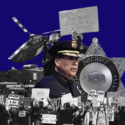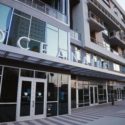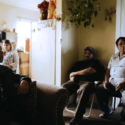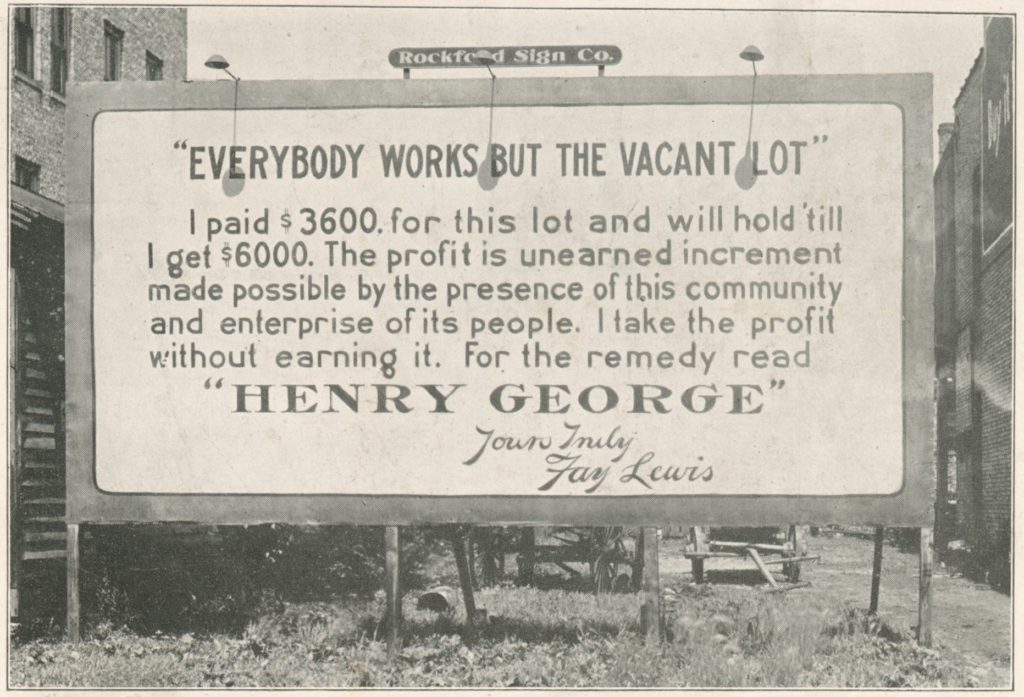A Year Later, Long Beach Has Not Ordered an Independent Review of Police Response to George Floyd Uprising
16 minute readA year after Long Beach saw thousands take to the streets in response to the murder of George Floyd by a police officer in Minneapolis, the public still does not have a detailed account, from beginning to end, of the decisions and actions taken by city leaders, police command staff, and officers on the ground that day.
Unlike Long Beach, Los Angeles and Santa Monica were among many cities across the country to commission independent reviews of their police departments’ response to the protests. These reports, which have been released in recent months, pulled together interviews, internal documents, and video footage to evaluate how police handled the civil unrest on and around May 31, 2020.
In both cases, researchers were critical of police aggression and unpreparedness, resulting in a litany of recommendations. In fact, independent after-action reports in cities nationwide provided a “damning indictment of police forces that were poorly trained, heavily militarized and stunningly unprepared,” according to an analysis by the New York Times. These evaluations repeatedly found police departments “need more training in how to handle large protests.”
Other recommendations included things like better regulation and recordkeeping of less-lethal munitions and consulting with civil rights attorneys on lawful protest-management policies.
Long Beach, Santa Monica, and Los Angeles all saw officers use force on mostly non-violent demonstrators as looters ransacked businesses leaving police scrambling to seize control of a chaotic situation.
By the time the dust settled in Long Beach, 103 people had been arrested (74 for curfew violations), dozens of businesses had been broken into or vandalized, scores of less-lethal rounds had been fired at protesters by police, and National Guard troops were patrolling the downtown streets.
Criticism about how police handled the crowds didn’t take long to pour in. Community members quickly took to social media to denounce police’s heavy-handed tactics against protesters while business owners questioned why police hadn’t acted more proactively to stop the relatively small amount of people who were looting.
But without an outside evaluation of the police response, the only review that was conducted was an internal LBPD critical incident debrief that resulted in the “distribution of departmentwide projects,” according to police spokesman Richard Mejia. He did not elaborate on what those projects consisted of.
Even the LBPD’s own rank-and-file complained behind-the-scenes about being outnumbered and unprepared. But in public, city officials praised the police’s response.
“I want to be very, very clear that the Police Department acted heroically, that we should be proud of the work they did and they are working their asses off,” Mayor Robert Garcia said at a news conference the day after the uprising.
On June 23, Long Beach police Chief Robert Luna defended his department’s performance before the City Council’s Public Safety Committee.
“We had some of our best people planning and organizing our response. And I actually believe they did a very good job,” Luna said. “If we knew what we knew today, several weeks later, 20/20 hindsight, could we have done better? Potentially, but as you see me lay this out you’ll understand the complexities that we were dealing with and how much effort went in to protect our city.”
The hearing lasted about an hour and a half, during which time Luna and Fire Chief Xavier Espino debriefed the Committee about the response to the protest and answered their questions.
Luna told the Committee that on the day of the civil unrest, the crowds ballooned beyond police’s expectation of several hundred to several thousand. Calls for service increased by 171%. And even with roughly seven times the amount of officers typically deployed on the streets, field supervisors didn’t feel it was safe to make arrests until around 7:30 p.m. when police readjusted their strategy.
“It was very chaotic out there. A lot of things were happening at the same time,” Luna said.
Third District Councilmember Suzie Price, who until this year chaired the Public Safety Committee, said the June hearing was evidence that the decisions made by police had been interrogated before the public.
“This meeting included [an] opportunity for public comment as well as discussions among the committee members,” said Price in an email.
However, members of the public cannot be reasonably expected to probe the police’s response as authoritatively as civil rights and law enforcement oversight experts.
Additionally, the same month as the hearing, Jeannine Pearce, who was on the City Council at the time of the uprising, told the Long Beach Post that the council has a habit of soft-pedaling criticism of police in the public eye, raising questions about whether the Committee was the best venue for evaluating the police response.
“It’s the culture to deal with the hard things in closed sessions. But publicly, we are to thank our officers, thank the chief and just know they are listening and doing better,” Pearce said.
Price, who also works as a deputy district attorney in Orange County, defended the decision not to call for an independent review and emphasized that relative to other cities Long Beach was not as heavily impacted by the civil unrest.
“The decisions made by the City Manager, Police Chief, and Fire Chief during this emergency that occurred during the already existing COVID-19 emergency received some scrutiny,” Price said in an email. “However, the fact that we saw incidents of unrest limited to a single evening and with no significant injuries speaks to the measured approach that was implemented.”
The current chair of the Public Safety Committee, Second District Councilmember Suely Saro, did not respond to questions about whether the body will take up the issue in the future.
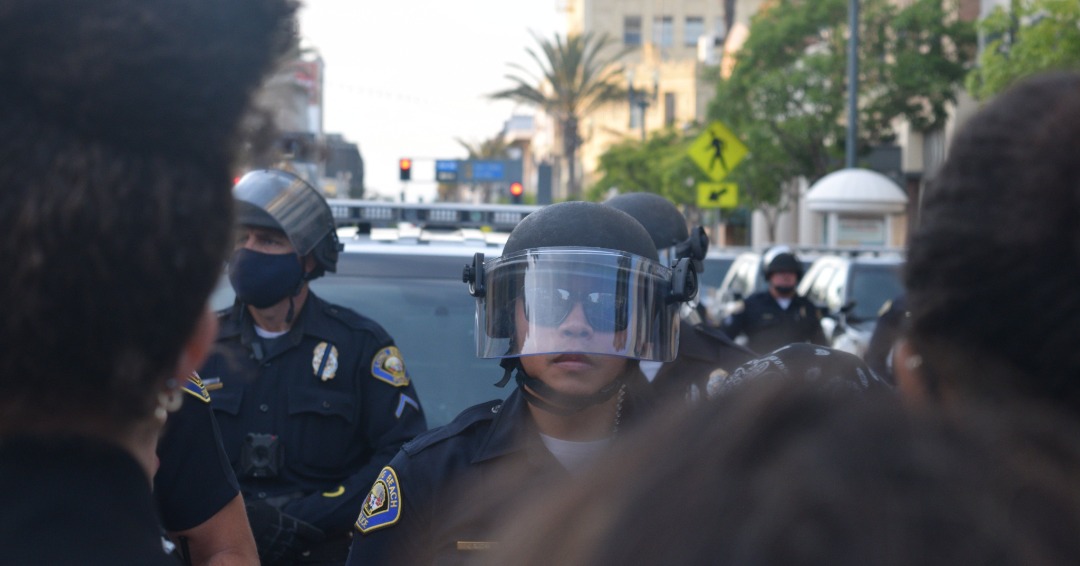
LESS-LETHAL MUNITIONS INJURED PROTESTERS
Although there was no loss of life or life-threatening injuries during the civil unrest, a woman lost part of her finger and KPCC reporter Adolfo Guzman-Lopez had his neck seriously wounded by so-called less-lethal projectiles fired by police. A CT scan later revealed the force of the impact knocked the fillings out of Guzman-Lopez’s teeth and he took several weeks of medical leave to recover from his injuries. The police department would go on to determine that the incident was within policy.
Others on social media reported injuries ranging from a broken arm to an injured eye to painful welts, all inflicted by LBPD’s use of less-lethal munitions. And then there’s this disturbing video posted to Twitter appearing to show an officer striking a person with a less-lethal round at close range outside of St. Mary’s Medical Center.
A police spokesperson told us last June that “the video is too far away to see the unit number on the vehicle or even what exactly is happening…we would need to have the time and any other more specific information to try and identify what the circumstances were and who was involved. Given that we are still on Stage 3 Tactical Alert, the department does not have the resources available to do broad searches of all documents/footage from that night.”
Luna was unable to tell the Public Safety Committee how many people were struck by less-lethal rounds when asked for a count by Eighth District Councilmember Al Austin.
“We understand that there were several people who were struck by 40mm [less-lethal rounds], but not a lot of them came forward,” Luna said.
Mejia said two complaints related to the civil unrest were filed with the police department. Complaints filed with the LBPD are supposed to be investigated by the Internal Affairs Division before being handed over to the Citizen Police Complaint Commission (CPCC) for a second review. (Notably, Luna gave a different number in June when he told the Public Safety Committee that five complaints had been filed related to excessive force during the protest.)
According to Patrick Weithers, manager of the CPCC, a total of three complaints resulting from the actions taken by police during the uprising were reviewed by the body.
Tomisin Oluwole
Ode to Pink II, 2020
Acrylic and marker on paper
14 x 22 inches
Click here to check out our interview with Tomisin Oluwole, a a literary and visual artist based in Long Beach.

Instead of gunking up our site with ads, we use this space to display and promote the work of local artists.
“All three cases have been seen by the Commission, and finding recommendations have been rendered by the Commission,” Weithers said in an email.
The outcome of the investigations into the complaints is unclear, but Mejia said the only officer disciplined for actions stemming from the civil unrest was Jacob Delgado, who infamously posted a photo on social media of a baton over a bloodied sidewalk.
Weithers said that the Commission did not conduct a comprehensive review of the LBPD’s response to the civil unrest because “that is not in our Charter authority.”
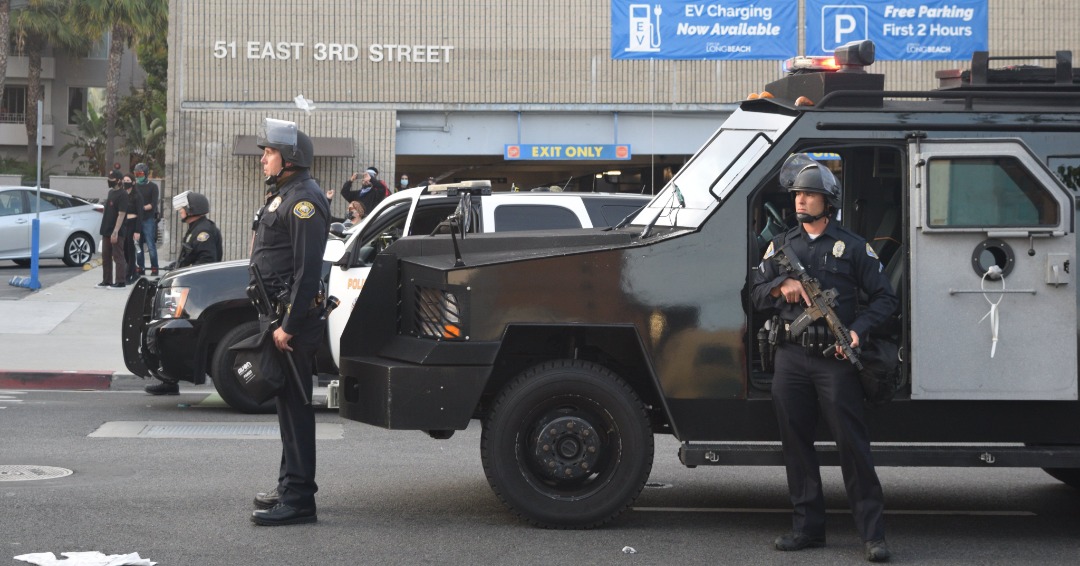
LARGEST POLICE RESPONSE IN A GENERATION
The events of May 31, 2020 marked the most significant civil unrest and law enforcement response in Long Beach since riots erupted in the spring of 1992 across Southern California after the acquittal of four white police officers in the brutal beating of Rodney King.
Police estimated that last summer’s uprising numbered more than 5,000 people, who were divided into several groups, mainly concentrated around the intersection of Third Street and Pine Avenue and at the Pike Outlets.
Police say they began declaring the gatherings an unlawful assembly at about 4:45 p.m., about two and a half hours into the protest. An 8 p.m. citywide curfew was also imposed.
Following dispersal orders, a doctor, a teen author, and a single-mother were among those injured by less-lethal munitions fired by police at protesters. All of them say they were protesting peacefully when they were hit. Many others later posted about their injuries on social media. But exactly how many people were injured by police that day remains unknown.
“People are expected to vacate that area” when an unlawful assembly is declared, Luna said before the Public Safety Committee.
According to the department’s own statistics, officers fired an estimated 256 40mm less-lethal projectiles during the civil unrest. In the previous five years combined, officers fired 163 of these less-lethal rounds. Police said no chemical agents were deployed during the protest.
In contrast to their name, less-lethal rounds have the potential to be deadly and since last summer’s protests, some cities and states have moved to ban or severely restrict the use of these devices by police for crowd control purposes. In fact, a bill moving through the California legislature would do just that.
“No one who is simply exercising their right to protest should face possible injury or death because officers are indiscriminately firing rubber bullets into a crowd,” said Assemblywoman Lorena Gonzalez (D-San Diego), one of the coauthors of the bill, in a statement. “Breaking a city-imposed curfew is not a sufficient basis for use of rubber bullets.”
According to Luna, less-lethal rounds were fired only after bottles and other projectiles were thrown at officers clad in riot gear. A video released by the LBPD in July to explain how Guzman-Lopez may have been hit in the neck by one of these rounds includes footage showing two bottles, one plastic and one glass, being thrown at officers standing in a skirmish line. Mejia, the LBPD spokesperson, said 16 officers were injured due to civil unrest between May 31, 2020 and June 5, 2020, though he did not specify the severity of the injuries.
OUTSIDE REVIEW TOUGH ON POLICE ELSEWHERE
In Los Angeles, where protests were larger, more intense, and lasted several days, the City Council appointed long-time criminal defense attorney and former Los Angeles Board of Police Commissioner Gerald Challeff to lead the retrospective review of the police response.
It found that the Los Angeles Police Department failed to properly plan, inappropriately carried out mass arrests, and was inadequately trained on the use of less-lethal weapons.
The report found that because 40mm less-lethal rounds have a greater effective range, the potential to hit the wrong person in a crowd that is moving is magnified.
“The skill level required to deploy the 40mm in chaotic public order policing situations is high. Officers must be extremely competent and possess excellent marksmanship skills. It is unlikely that all officers trained possess the marksmanship skills necessary to competently deploy the 40mm system under those circumstances,” the report found.
These are the same large-caliber, target-specific munitions LBPD fired at protesters. LBPD policy requires that only officers who’ve had the appropriate training be authorized to use the less-lethal projectile launchers.
Mejia said Long Beach police officers receive four hours of training while at the police academy and an annual two-hour refresher course. The training “includes a review of weapon operation, related policies, and criteria for deployment of the weapon. All classes also include practice application/scenario-based training,” according to Mejia.
The department’s policy also requires that officers aim for the stomach and the extremities unless they are intending to kill. How well this policy was followed during the uprising is something the public has been kept in the dark about.
In Santa Monica, where the protest was comparable to the one seen in Long Beach, city leaders voted to spend $75,000 to commission an independent after-action report from OIR Group, a team of police practices experts. The report was made public this month and “details the severe limitations of the Department’s original plan, and the disarray that quickly resulted from fragmented leadership and inadequate resources.”
Researchers identified some “questionable deployments” of impact munitions and pepperballs but ultimately concluded that Santa Monica avoided causing unjustified physical harm to members of the public as seen in other nearby jurisdictions.
“Nonetheless, law enforcement use of force in any context is inherently worthy of consideration, and the unique issues presented on May 31 are additional cause for careful analysis,” the report concluded.
CIVIL RIGHTS LAWSUITS
At least two lawsuits have been filed by protesters accusing the LBPD of excessive force and First Amendment violations last year. One plaintiff, Marisa Baltazar, had part of her finger amputated after allegedly being struck by a less-lethal round while standing in the intersection of Broadway and Pine Avenue.
Footage taken at the scene appears to show Baltazar holding her phone up to record video before police shoot less-lethal projectiles into the crowd she’s in. Baltazar is then seen gripping her finger in pain as blood dribbles to the ground.
Baltazar’s lawsuit claims that when she showed up to an emergency room, a doctor initially diagnosed her with a “gunshot wound to the finger.”
“Plaintiff and surrounding protesters were assembled peacefully and were not engaged in acts of violence or provocation,” the lawsuit says.
The second plaintiff, Serra Chansy, alleges in another lawsuit that she was peacefully protesting when she was hit in the left hand by a less-lethal round, resulting in a “severe injury to her metacarpal bones.”
Attorneys for both plaintiffs say the lawsuits are not just about seeking compensation for the two women, but also about compelling the LBPD to put in place policies that will protect future protesters.
“The same policies that injured Miss Baltazar and Miss Chansy are still implemented today, as far as we’re aware of it,” said attorney Pascual Torres. “So that means if another protest arises, there’s the potential of possible injuries to protesters, so I think that’s the concerning part, that there have not been changes.”

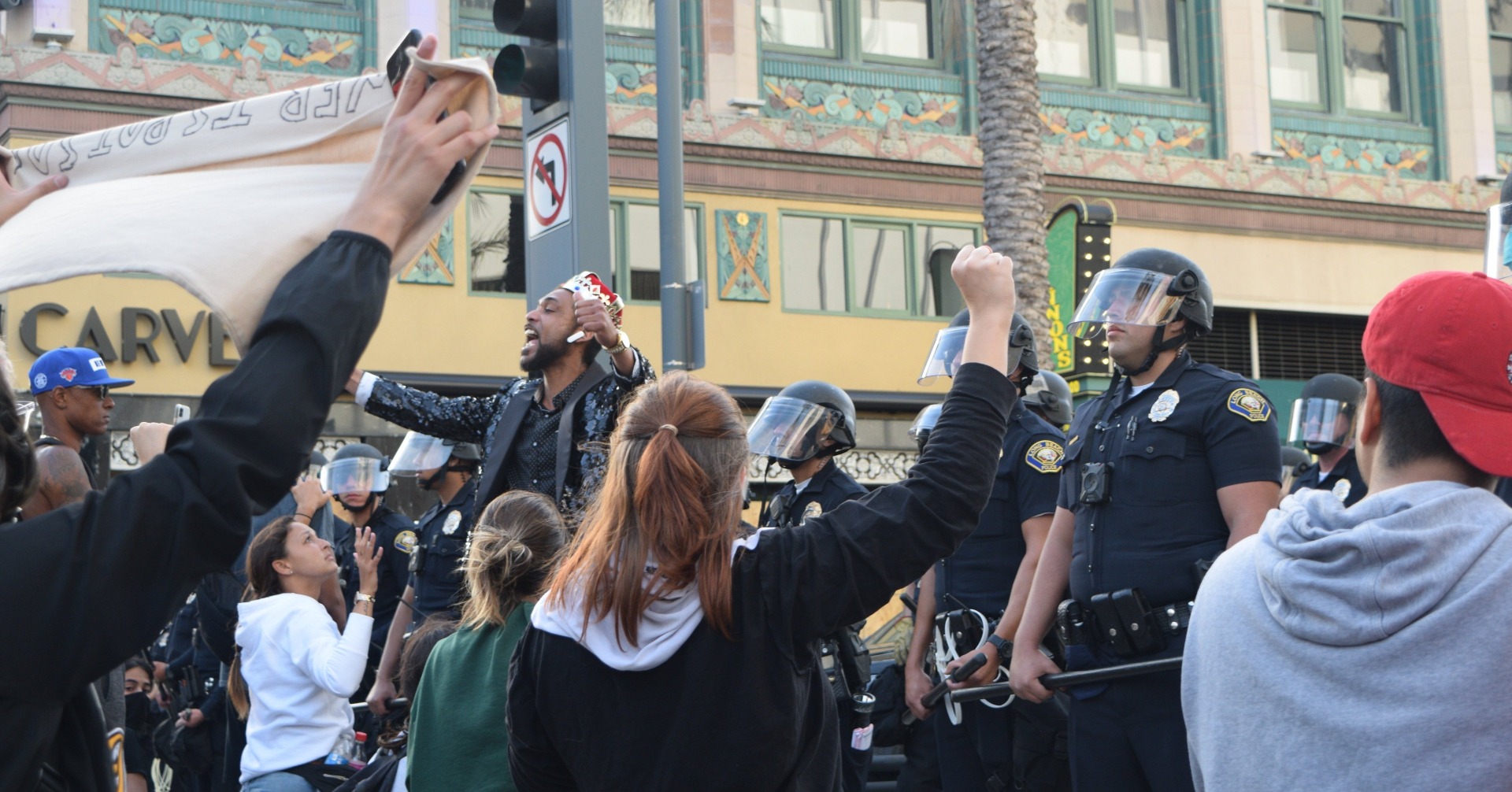
 esther@forthe.org
esther@forthe.org @reporterkflores
@reporterkflores